|
Darwin's
remarkable Revolution
"MAN was certainly not the goal of evolution, which evidently had no goal. He was not planned, in an operation wholly planless. He is not the ultimate in a single constant trend toward higher things, in the history of life with innumerable trends, none of them constant, and some toward the lower, rather than the higher. Is his place in nature then, that of a mere accident without significance?"
George Gaylord Simpson, The Meaning of Evolution.
|
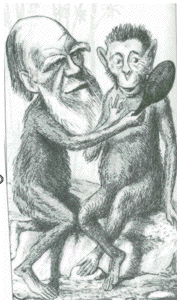
|
Charles Darwin from 1859 until 1872 completely
altered the biological understanding of life on earth. |
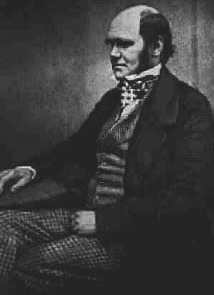 |
|
|
| Can the Origin
of Species and Genesis be reconciled together in a new
rendition of humanity's place in nature? |
| Darwin
the caricature of his ideas. |
Perhaps, maybe, yes, or no, the inquiry
must start with two related questions that are asked by the author: |
Charles
Robert Darwin |

|
•
In what kind
of world
do we live? |
|
•
What is the evidence for
evolution on Earth? |
Our
natural place | Evidence | deep time | What does evolve? | Conclusions

Layers of sedimentary rock are indeed a text.
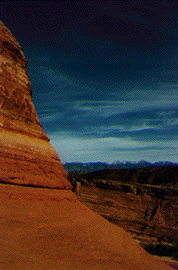
The Text
What Evolution
Is, Ernst Mayr, 2001.
see: Understanding Evolution's web site at U. C. Berkeley.
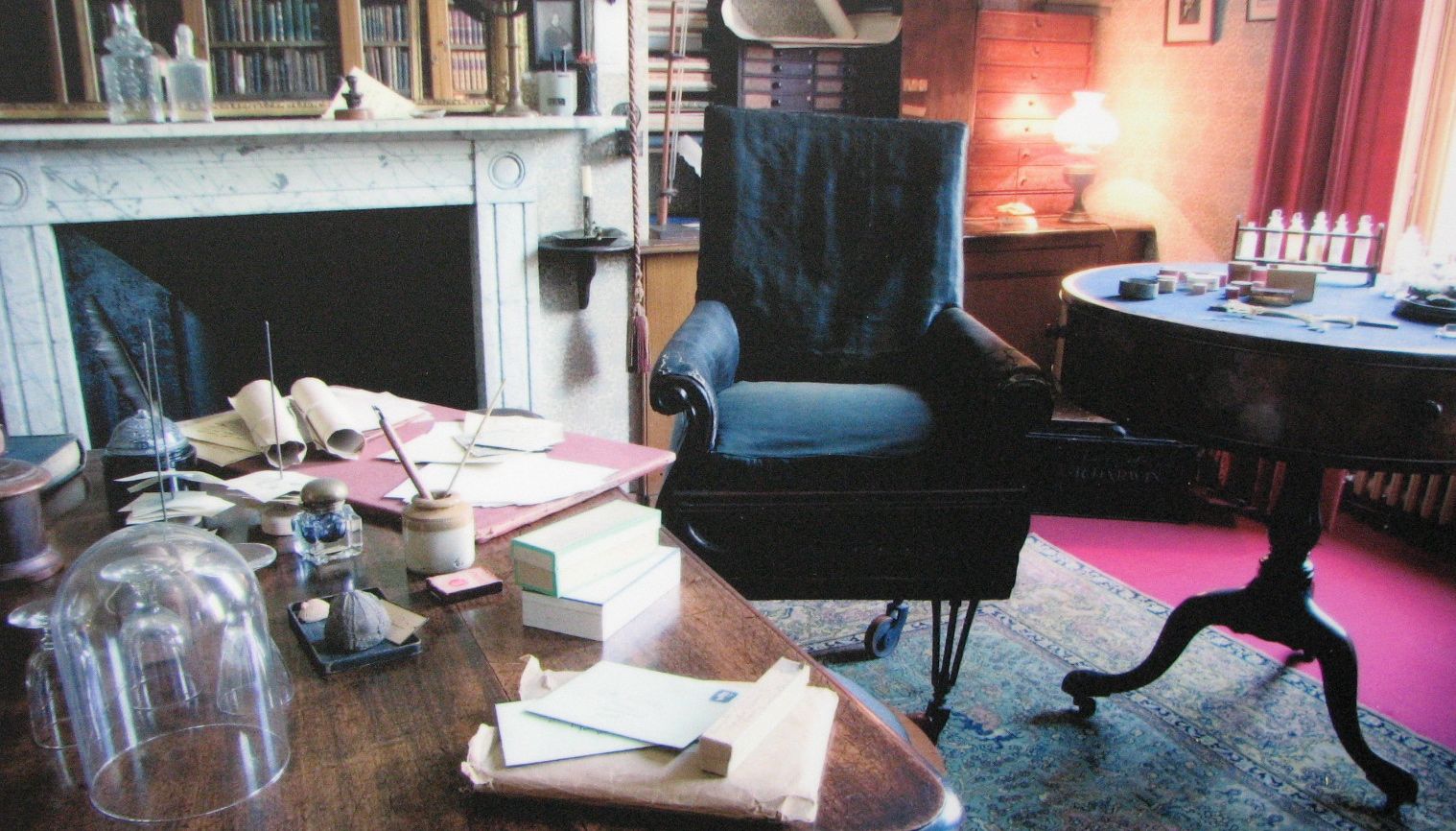
Where Darwin worked for his prolific career.

Our
natural place | Evidence | What does evolve? | Conclusions

i. What
describes and defines humanity’s place in nature?
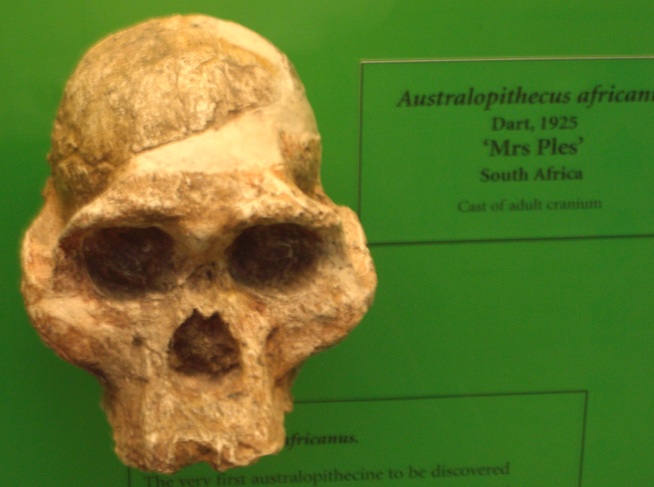
Human
origins
Creation | La Scala -–ladder of nature– Natura | Variety | Common ancestry | fossil record | deep time | transitions | comprehending change
Our
natural place | Evidence | What does evolve? | Conclusions

Creation
-- occurred in stages: an innate generative capacity or a deliberate design?

La Scala natura, or the great chain of being -- a sort of
ladder of bodily forms.

Variety within the same breeds of domesticated animals and
plants.
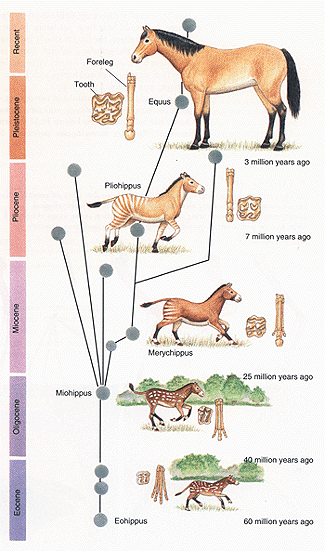
Common ancestry there are similar cellular structures shared
by all life.
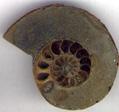 Fossils the remains of similar to and very divergent forms from current life.
Fossils the remains of similar to and very divergent forms from current life.
Antiquity of the geological past is revealed in pollen, tree
rings, chemistry.
Human
ancestry was already questioned in the decade when Darwin's Origin
of Species was published in November of 1859 with the discovery of the skull of Neanderthal in
a German valley.
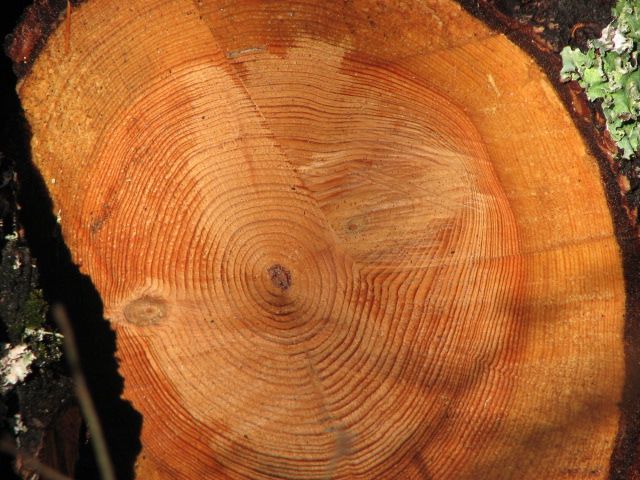
See the tree rings on this photograph? This is dendrochronology is the study of tree rings as clues to past conditions where the tree thrived.
Ian Tattersal
Biological
differentiation due to geographical isolation leads to speciation,
and thus change in a population over generations.
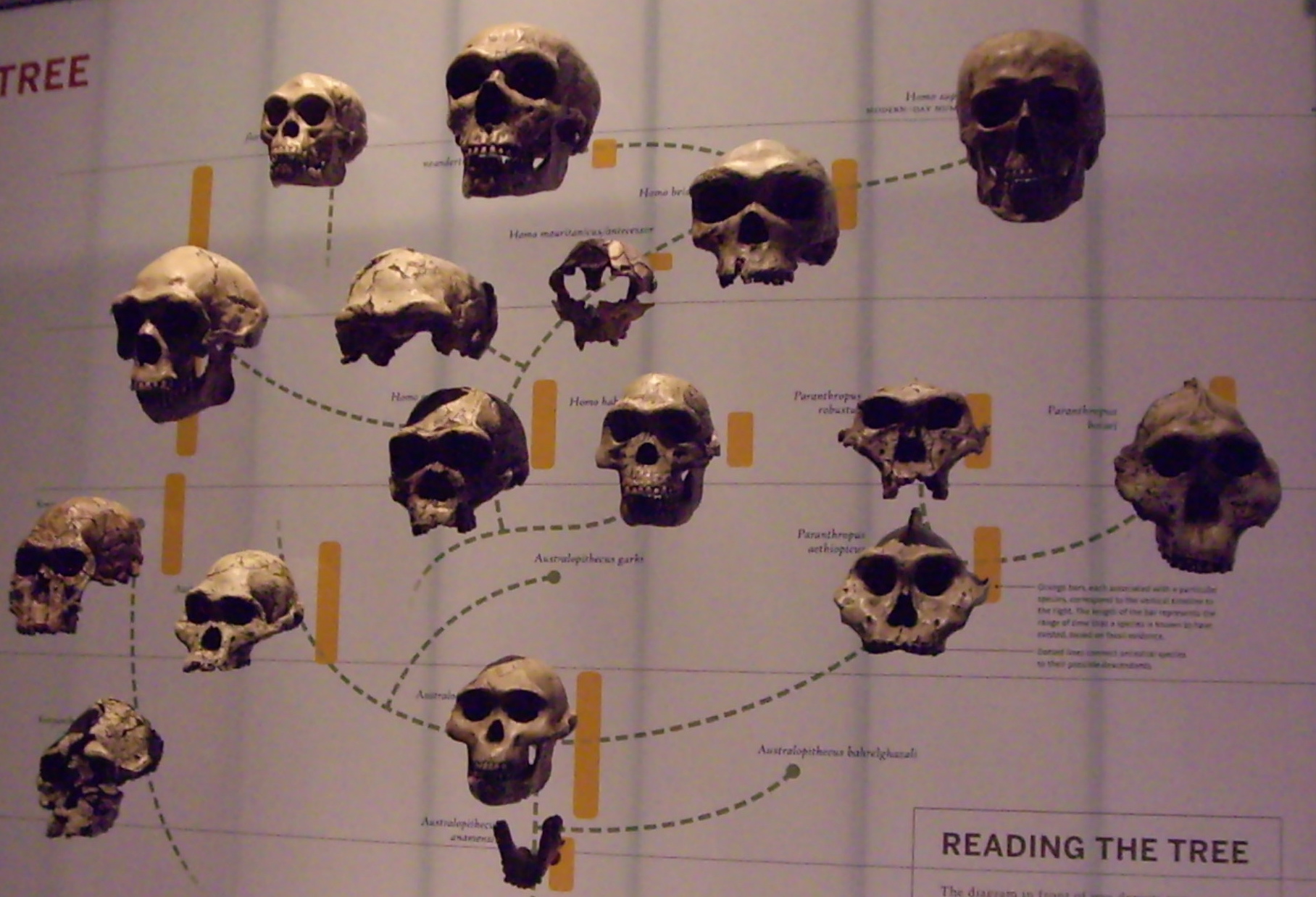
The human family tree that grew out of Africa.
The
ways to understand change in the world.
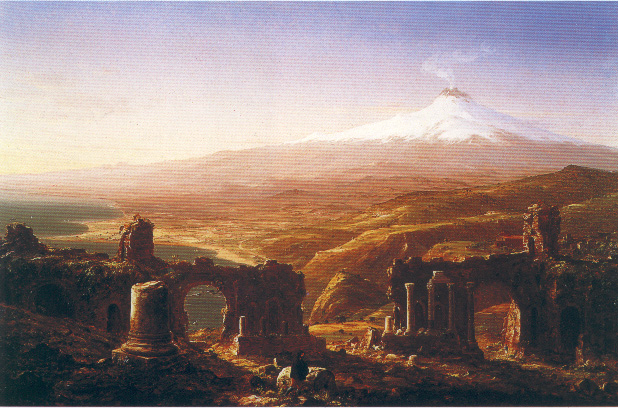
Geological changes are for example induced by volcanoes as depicted here of Mount Etna, Sicily, by Thomas Cole.
A matrix
of possibilities emerge from these two possible ways to understand the the process of geological and biological changes in the world:
| |
A) fixed
kinds (ideas) |
B) change
(flux) |
1) Infinite
duration
|
Fossils that resemble living creatures. |
Fossils that show no current forms. |
2) Constant
world of short duration
|
Like species produce like offspring. |
Volcanic explosions, fire & floods. |
| |
Type
or essence |
Existence
& probability |
“Already
in the 1860s knowledgeable biologists and geologists accepted that evolution
was a fact, but Darwin’s explanations of the how and why of evolution faced
protracted opposition, as we shall show in later chapters…. some of the
evidence for the actual occurrence of evolution that has been gathered since
1859.”
p. 11
Our
natural place | Evidence | What does evolve? | Conclusions

ii.
 Evidence
Evidence
“the findings would make no sense in any other explanation."
A. Fossils
- appearances
- stasis (long periods
of uninterrupted change) see trilobites
B. lineage and variability (15)
- DINOSAURS
- WHALES
- HORSES
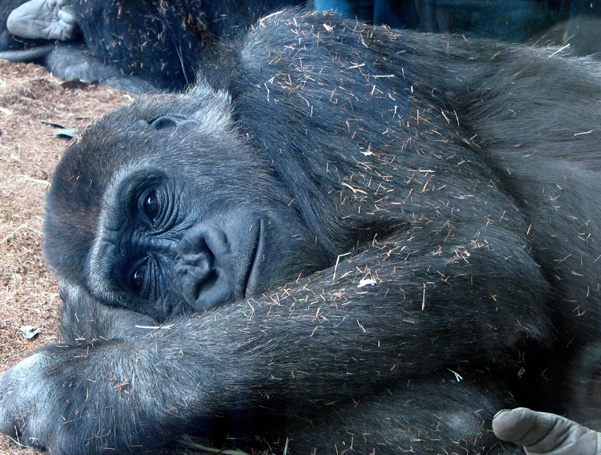
C. Common
descent
chimpanzees
gorillas
D. Morphological
similarity
- Insect wings and bat
wings
- Forelimbs
E. Embryology -- there are certain developmental stages common to vertebrate embryos
F. Vestigial
structures -- the appendix, coccyx,
G. Biogeography or global distribution --
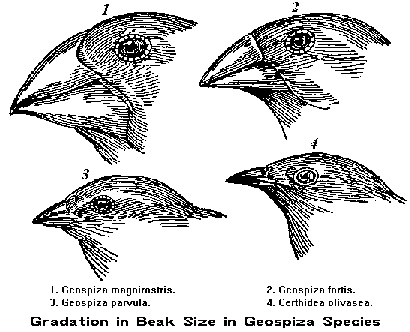
1. the existence of rhinoceros, camels, monkeys, and elephants in Asia and Africa.
2. Rheas, Ostriches, and Emus are birds of similar shape on different continents.
H. Molecular
evidence or molecular biology --
The importance of molecular
(DNA comparisons) analysis

The molecular clock
 Evolution of the genotype
as a whole
Evolution of the genotype
as a whole
“the essentially
complete DNA sequence of the entire genome”
p. 37.
 genes are defined "as base pair sequences" that are capable of being used to form amino acid chains that comprise proteins [enzymes and hormones].
genes are defined "as base pair sequences" that are capable of being used to form amino acid chains that comprise proteins [enzymes and hormones].
Origins of new genes
Orthologous and paralogous genes
p. 38.
Our
natural place | Evidence | What does evolve? | Conclusions

iii. What does and 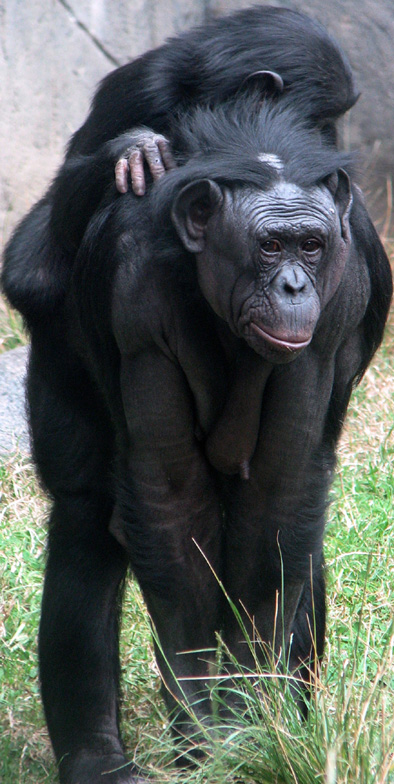 what
does not "evolve" over time?
what
does not "evolve" over time?
Offspring vary
Variations accumulate
at a deferential rate among many more offspring than can survive
Over time, the surviving
reproductive populations vary too greatly to breed successfully
- a. jumping genes
or transposons
- b. genetic drift
- c. geographical
isolation
- d. behavioral isolation
mechanisms
- Allopatric vs. sympatric speciation
- difficulty in defining and determining a species.
Bonobo Chimpanzee, mother and child.

Our
natural place | Evidence | What does evolve? | Conclusions

iv. Conclusion:
The argument over Darwin's findings has removed some of the
most imaginative and wonderfully bizarre qualities of nature
from the focus of our attention, in my perspective.
Instead, we dwell on the exceptions to the
rule, the dry to bland details of acquiring a living, and the hard to answer
questions when all around us the exceptions, wonderment, and an enormously deep
and certain knowledge calls out for our attention.
- exceptions –
- wonderment –
- deep
and certain knowledge –
- calls out for our attention –

Galápagos birds called Finches (or mockingbirds) that Darwin actually collected and that he thought were all one species.
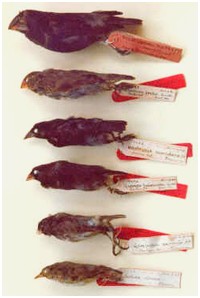
"After his crucial conversation with John Gould about the Galapagos mockingbirds in 1837, Darwin continued to struggle with a problem of how to define a species, . . . "
Mayr, One Long Argument, p. 26.
 The sources:
The sources:
Homer W. Smith, From Fish to Philosopher: The Story of Our Internal Environment, (Boston: Little Brown, 1953.) p. 182.
Ernst Mayr, What Evolution
Is, 2001.
Ian Tattersall, Monkey in the Mirror, 2002.
Neil Shubin, The Universe Within, 2013.
George Gaylord Simpson, The Meaning of Evolution. Hartford, Yale University Press, 1997.
Charles Darwin, On the Origin of Species: Or the Preservation of Favoured Races in the Struggle for Life. 1859.
Index to Darwin related pages on this site.
Cultural evolution.
see: Understanding Evolution's web site at U. C. Berkeley.
Text-based
assignments
- Short Essay, two pages; What is evolution?
- Short Essay, three pages; How was Darwin misunderstood by scientists or
social scientists?
- Term Essay, five pages; Topic of you choice (with approval) drawn from
Mayr, Darwin and Journal sources.
Our
natural place | Evidence | What does evolve? | Conclusions

Darwinism
| Ernst Mayr | Consequences
of Darwin's Revolutions
Class related web pages
The Complete
works of Darwin on the Internet
Notes from
the Origin of Species.
Related
pages Darwin's Revolution | primary
sources | plate tectonics
Terms
| Glossary | Word
webs | Basic vocabulary
| Advanced Vocabulary |
Antonyms | Synonyms
Writing
| Interviews | Free
Writing









 Fossils the remains of similar to and very divergent forms from current life.
Fossils the remains of similar to and very divergent forms from current life. 


 Evidence
Evidence






